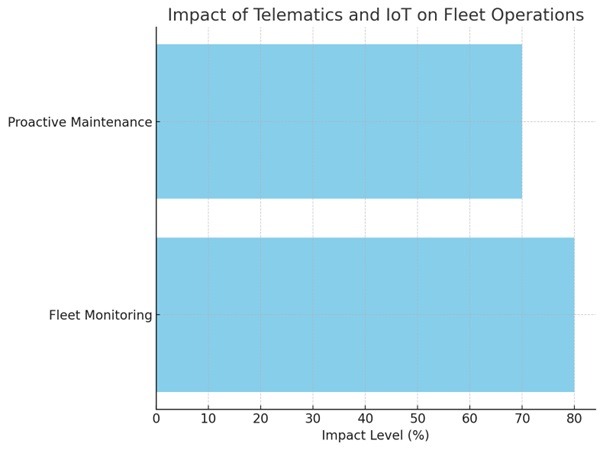
Optimizing DSD Routes: Innovative Approaches, Technologies and Key Variables
In a recent article, we explored some strategies to increase the efficiency of routes in a DSD operation. However, optimizing these routes can be complex, involving various dynamic factors. In this article, I explore innovative approaches to optimizing DSD routes and examine the key variables influencing route planning and alterations, focusing on how cutting-edge technology is transforming the industry.
The Importance of Optimizing DSD Routes
Optimizing DSD routes is crucial for improving operational efficiency, reducing fuel and labor costs, and maintaining customer satisfaction. With real-time data and sophisticated route-planning technologies, companies can more effectively respond to changes in traffic, customer demand, and delivery windows. These innovations also help companies meet sustainability goals and enhance customer service by delivering products promptly and in optimal condition.
Understanding the Variables Affecting Delivery Time
Several factors influence delivery time, including:
- Traffic: Congestion can significantly delay deliveries, especially in urban areas.
- Weather: Adverse weather conditions, such as rain, snow, or extreme heat, can affect driving speeds and increase delivery times.
- Customer Locations: The number and distribution of customer locations can influence route efficiency.
- Delivery Window: Specific delivery time windows for customers can constrain route planning.
- Vehicle Capacity: The size and capacity of delivery vehicles can affect the number of stops per route.
- Driver Factors: Driver experience, familiarity with the area, and driving habits can impact delivery times.
- Driver Working Hours and Regulations: Adherence to labor regulations regarding driver hours and rest breaks must be factored into route adjustments, ensuring drivers can safely and legally meet their schedules.
- Fleet and Vehicle Type: Route changes may also be influenced by vehicle type, particularly for electric vehicles that need access to charging stations or trucks restricted by road regulations.
Innovative Technologies for Optimizing DSD Routes
The rapid advancement of technology enables companies to optimize DSD routes with greater precision, flexibility, and efficiency. Here are some key technologies driving this transformation:
AI-Powered Route Optimization: With Artificial Intelligence (AI), you can analyze historical delivery data and real-time conditions to recommend optimal routes. It can dynamically adjust routes based on traffic, order changes, and weather conditions, reducing fuel costs and ensuring timely deliveries.
Telematics and IoT Integration: Telematics and Internet of Things (IoT) devices installed in delivery vehicles provide real-time visibility into vehicle location, driver behavior, and vehicle health. This data can be used to adjust routes as necessary and ensure that vehicles are operating efficiently. These are two examples.
- Fleet Monitoring: Telematics allows fleet managers to monitor routes, track vehicle performance, and reroute drivers based on real-time information.
- Proactive Maintenance: IoT sensors track vehicle performance, ensuring that maintenance issues are addressed before they lead to breakdowns or delays.

Advanced Fleet Management Software: Fleet management systems provide centralized control over route planning and delivery execution. These systems integrate with Warehouse Management Systems (WMS) and Transportation Management Systems (TMS), ensuring all parts of the supply chain are synchronized.
Machine Learning for Demand Forecasting: Machine learning models analyze sales data, customer demand trends, and external factors to predict store needs more accurately. This enables companies to optimize routes based on anticipated demand, avoiding unnecessary trips or stockouts. It also ensures that vehicles carry the optimal load for each delivery stop, avoiding overstocking and reducing wasteful trips.
Mobile Apps for DSD Operations: Mobile apps designed for DSD drivers and field representatives are a game-changer in the transportation industry. They provide real-time route information, proof of delivery, and inventory updates, allowing drivers to send real-time updates, report delays, and confirm deliveries. This instant communication enables rapid adjustments to routes, ensuring efficient and timely deliveries.
Balancing Technology and Key Variables
While technology plays a significant role in DSD route optimization, it is essential to balance these innovations with the key variables that influence route changes. Integrating AI, telematics, and advanced fleet management with considerations such as traffic, weather, and customer demands ensures a more efficient, responsive, and flexible delivery system.
Conclusion
Innovative technologies and a keen understanding of the variables affecting delivery routes are transforming Direct Store Delivery operations. Laceup Solutions’ suite of products will help you implement some of these strategies, ensuring that your DSD routes are efficient, cost-effective, and adaptable to real-world challenges. If you want to learn more, give us your information to schedule a meeting.
I hope this article on optimizing DSD routes has been helpful to you. I will continue to post information related to warehouse management, distribution practices and trends, and the economy in general. Our channel has a lot of relevant information. Check out this DSD demo video.


Sorry, the comment form is closed at this time.